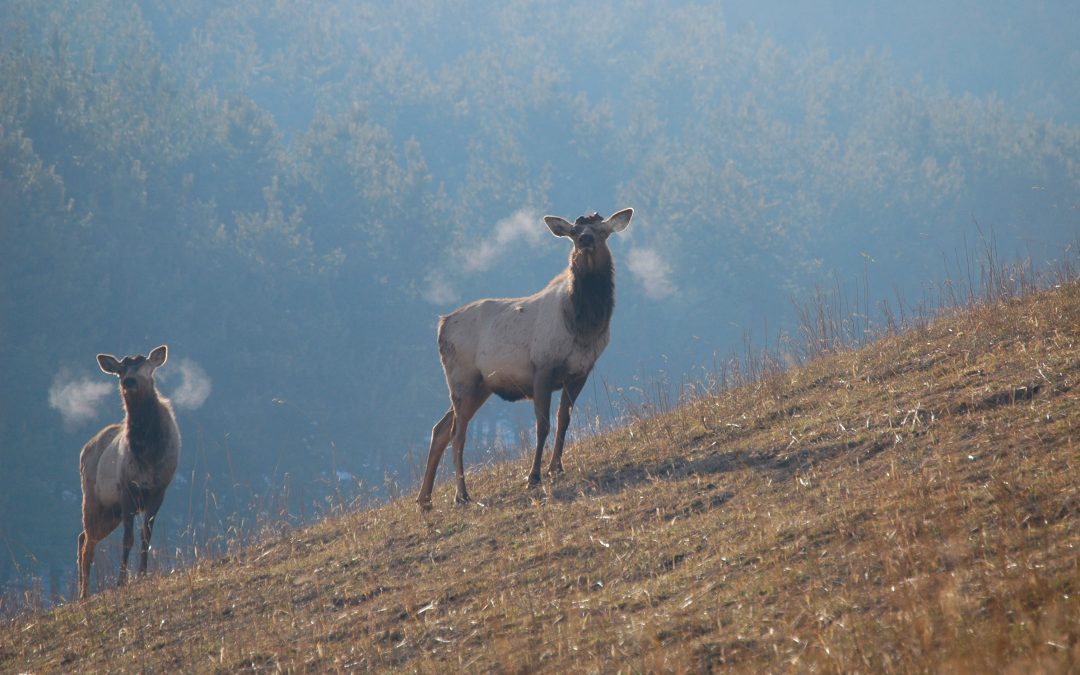In his blog Life‘s chemistry press, Reese Aptor writes about how air as a substance, water vapour, clouds and breathing are related to each other. (I touched on water vapour and how it‘s visibly present in an exhale in my blog post Ghost, 2017.) Reese explains the chemistry behind these phenomena in an accessible yet thorough way and gives answers to interesting questions like „What do breath and clouds have in common?“ and „Are you breathing out a cloud?“
“What do breath and clouds have in common?
Breathing out into cold air will create visible breath. Suppose we had a giant on the scale of a small moon floating up in the Stratosphere. This giant’s breath – if they were to breathe out in our direction – could easily reproduce the clouds that we have in the Troposphere (the part of the atmosphere that is closest to the Earth).
Why is that? Is breath really a microscopic cloud?
Breath is a mixture of air filled with warm water vapor molecules from our lungs. Walking out into the cold produces misted breath that we can see. It certainly looks cloud-like. Read more
Why can we see cooled down water vapor?
When the sun warms up the water in our oceans and lakes producing vapor molecules, these – being lighter than air – rise up into the upper Troposphere. The water vapor cools down into visible clouds.
In a cold environment, water vapor is moving from an invisible state (when warm) to a visible one (when cold).
• Invisible Warm water vapor —COOLING —-> Visible
• Visible Cool water vapor –WARMING—-> Invisible
What is the physics behind this changing invisibility/visibility?
The thing is that when water molecules cool down they form hydrogen bonds. Those are the bonds that allow one hydrogen atom to connect two larger atoms together (in this case two oxygen atoms).
The cooled down and interconnected water vapor molecules create a web that ensnares air bubbles.
Air bubbles reflect white light completely; the resulting effect is that the enmeshed air molecules within the web of cooled down water vapor molecules show up as floating ghostly masses of vapor.

The substance of air
Cooled down water vapor molecules can become “substance” for a couple of reasons: they are visible since the air allows them definition and distinction from the surroundings. Secondly, consolidating water molecules together – through hydrogen bonds – will concentrate the web of molecules into parcels of visible vapor. Take any of the following:
•breathing out warm air from one’s lungs in cold weather → miniature cloud puffs
•Hot water vapor from a kettle is invisible when it first comes out; a few inches away from the spout, the vapor cools down → and becomes visible

•The hot water from a hot shower generates steam → this floats in the bathroom as a swirling fog/cloud
•Creating mist/fog in the fall evenings; the days are still warm and generate a lot of humidity in the air → when evening comes, the cooling temperatures allow the water vapor molecules to connect into a three-dimensional web with clutches of air within its midst.
How does cooled down water vapor create such large masses of clouds in the sky? Well, cool temperatures in the Troposphere (usually -55° C / -64° F at the upper limits) enable water vapor molecules to form more sturdy hydrogen bonds.
The colder the water vapor molecule, the stronger the hydrogen bond. In fact, very cooled down water vapor molecules form ice crystals in cirrus clouds (the highest clouds in our Troposphere). These cold water vapor molecules form a very strong clan of molecules that are all attracted to each other; floating molecules are encouraged to attach themselves to the crowd. The end result is a strong web of hydrogen-bonded water vapor molecules high up in our sky.
This strong web is the basis of cloud formation.
What about water droplets within clouds?
Ok, so if clouds are a web of strongly attracted hydrogen bonded water vapor molecules, what about all the droplets of water that we know also exist within clouds? This is the subject of another post (if interested sign up for alerts). Suffice it to say that clouds form through a combination of factors:
•cooling water vapor is only one of those factors
•pressure effects of two high and low-pressure fronts bumping or crashing into each other
•Changing temperatures and winds
•Changing day/night temperatures
•Ongoing addition of warmer water vapor that is rising from the earth’s water surfaces
Are we breathing out a cloud?
Clouds are masses and masses of cooled down water vapor as well as droplets of liquid water and air. Visible clouds are massive entities. One average sized cloud 1-kilometer long x 1-kilometer high will contain 500 million grams of water (or 500,000 liters). That’s a lot of water.
To have a visual representation of that much water: A football field lined with 2-liter bottles side to side across the whole 360 x 160 feet breadth would give the equivalent of 500,000 bottles or 1 million liters of liquid.
Contrast that with one breath that contains 0.014 cc (= grams) of water (on the average, we exhale 400cc of water in 24 hours, almost half a liter). This is about 1 tablespoon each hour. It would take slightly more than 1000 breaths to fill up that one tablespoon of water!
Are we breathing out a cloud? Yes, as both clouds and our breath are part of the same initial process: Cooling down water vapor molecules. Clouds are just a little more involved.”
Source: Reese | Feb 19, 2018 | Fog, Clouds, and sky, Reese Aptor’s Blog
Picture credits:
1Header image. Courtesy of Shutterstock. By nik7ch, Stock photo ID: 30565345. Early in the morning, two morals left on glade.
2Mark Goebel. ji1920 Great Britain, Aerial. From Flickr, photosharing, Taken on Oct 20, 2005.
3Reese Aptor. Steam from a boiling Kettle. Taken Winter, 2017.

